15 Different Types of Garden Tools & Their Uses (With Pictures)
-
Shea Cummings
- Last updated:

Gardening is a great hobby and becoming more and more popular. The type of gardening you want to do will determine the tools you need. So, once you’ve decided on that, it’ll be time to get the basics.
The great thing about gardening is that you don’t need a ton of specialty tools to get you started. You can always add to your collection as you get deeper into the hobby. Below, we’ve compiled a list of 15 different types of tools that are commonly used and advantageous to have.
The 15 Types of Garden Tools
1. Hand Trowel
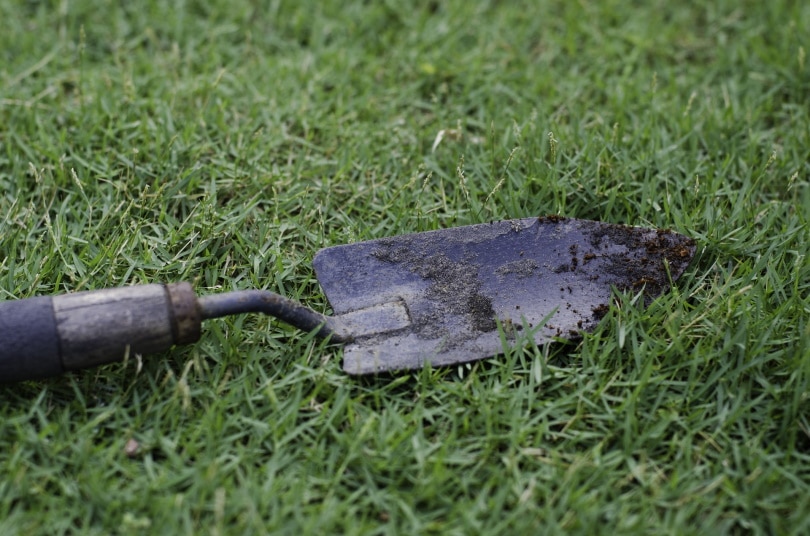
A hand trowel is to a gardener what a hammer is to a carpenter. This is easily one of the most common and essential tools a gardener will use. Whether you’re working in a bed or containers, you will use a hand trowel for transplanting and moving small amounts of dirt around.
Because of its size, it’s easy to misplace or bury a hand trowel. Many manufacturers are one step ahead of this and offer them with brightly colored handles or blades. If yours isn’t, then tying a bright ribbon on the handle wouldn’t be a bad idea.
2. Hoe

Different gardens will take different types of hoes. For example, a flat hoe works great to make rows for your vegetables if you’re doing a vegetable garden. Some hoes help you weed, or there are general-purpose hoes that assist in turning the soil.
The key thing to look for in a hoe is one with a handle of adequate length. This will enable you to reach longer distances comfortably.
3. Gardening Fork

When you’re planting at the beginning of the season or getting an area ready for new plants, you’ll have to turn the soil over—similar to what a tiller would do. If you have a lot of soil to turn, a spade is probably the ideal tool. However, if you’re doing a smaller area or soil that is quite dense, a gardening fork does well.
Just like the hand trowel, it’s easy to lose your fork. So, bright handles or bright ribbon is the best way to go!
4. Gloves
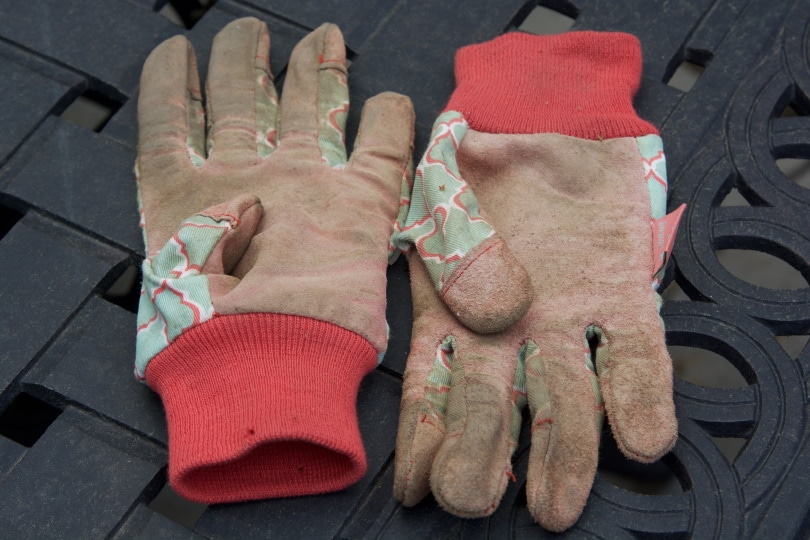
A good pair of gardening gloves aren’t necessarily tools, but they are a critical part of your gardening setup. Gloves will do multiple things. First off, they will protect your hands—this is especially beneficial if you’re dealing with plants that have thorns. The other benefit of gloves is that they will keep your hands relatively clean. Digging in the dirt can be messy business, but of course, that might be the draw of gardening for some people.
5. Bow Rake
A bow rake is an unspoken champion in the garden. Many people don’t give this tool the credit it’s due. The bow rake won’t make an ideal rake for the leaves in your yard, but it will do the job just fine in a smaller area like your garden. In addition to raking leaves, you can use it to mix mulch in or turn the soil. You can also use it to level the garden or break apart chunks of dirt once you get going in the spring.
6. Wheelbarrow
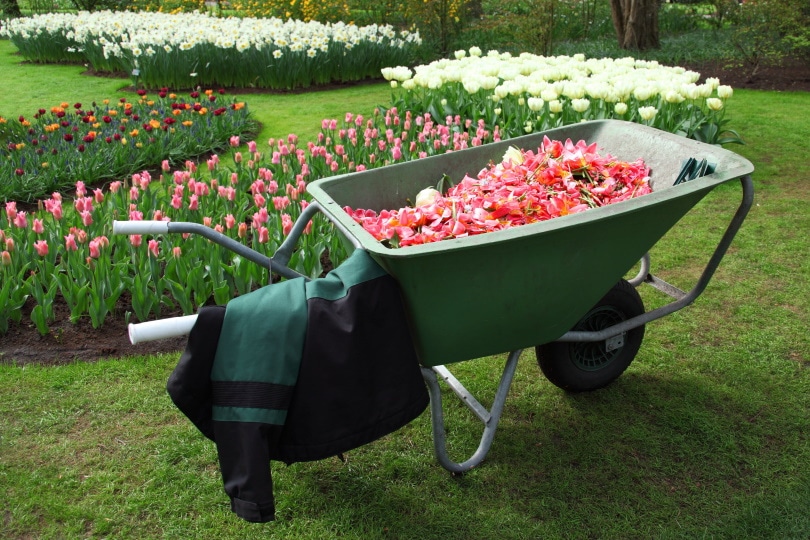
If you had to choose one tool that would save your back the most, a good wheelbarrow would undoubtedly be on that list. This may not be such a big deal if you have a small flower bed in front of your living room window. But, if you have a big backyard garden and it’s time to move topsoil around or pack weeds away, you’ll be grateful to have a solid wheelbarrow. Remember this tip: “big wheel and long handles”—you’ll thank us later!
7. Pruning Saw

Pruning saws are a great multi-purpose saw. You can get a small folding pruning saw or large, longer fixed-blade saws with holsters. Compared to a regular hand saw, the nice thing about a pruning saw is its slender blade. This is a huge benefit if you are reaching into a bush to prune back some of its branches and there isn’t a lot of space to get a big hand saw blade in there.
8. Pruning Shears
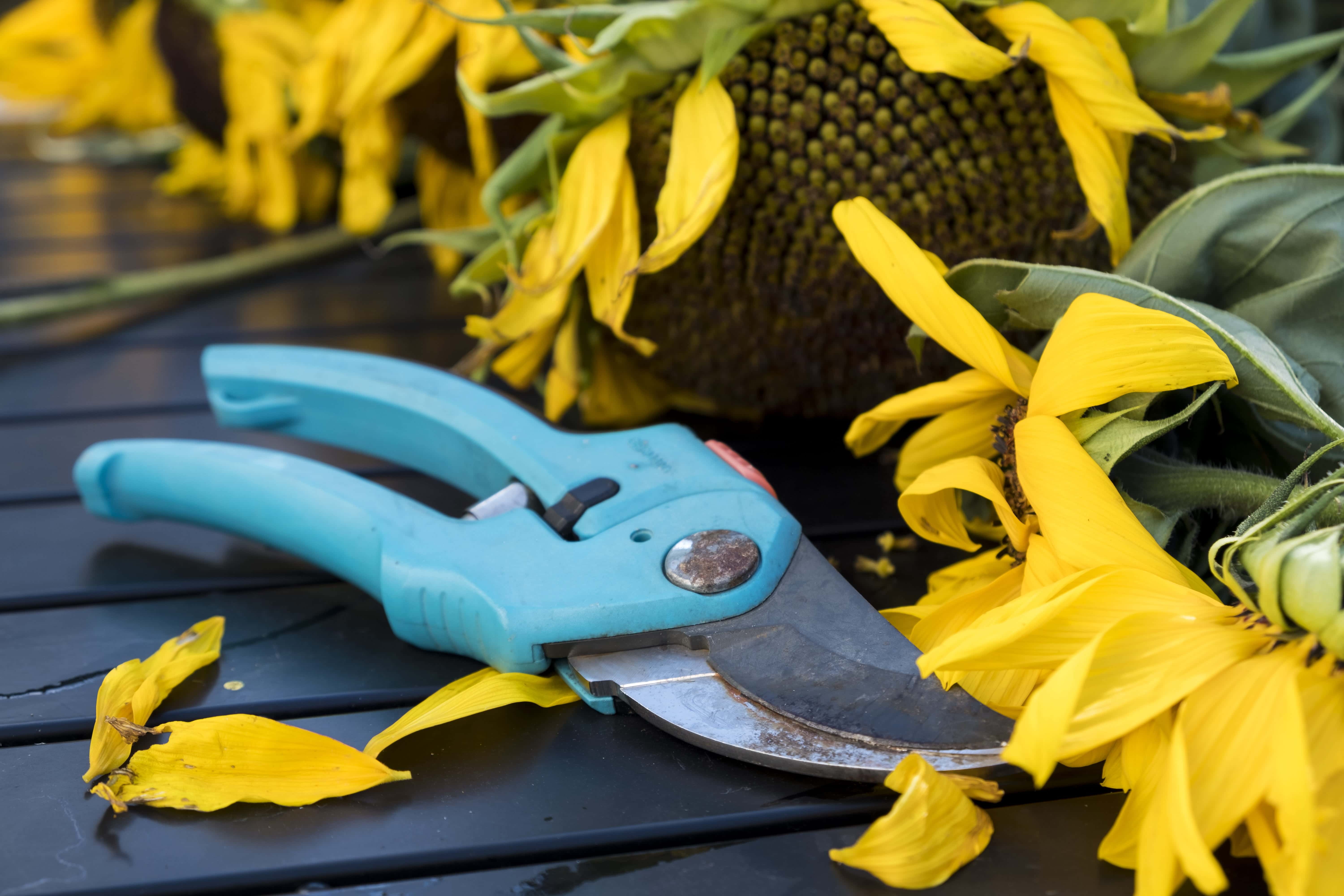
There are a few options of pruning shears available. Some are one-handed shears that are basically scissors on steroids. You can also get two-handed shears with short handles. Which type of pruning shears you go with will depend on the kind of gardening you are doing. In some cases, you’d be better off with a pair of regular shears and getting a good set of loppers (coming up in the list).
9. Watering Can
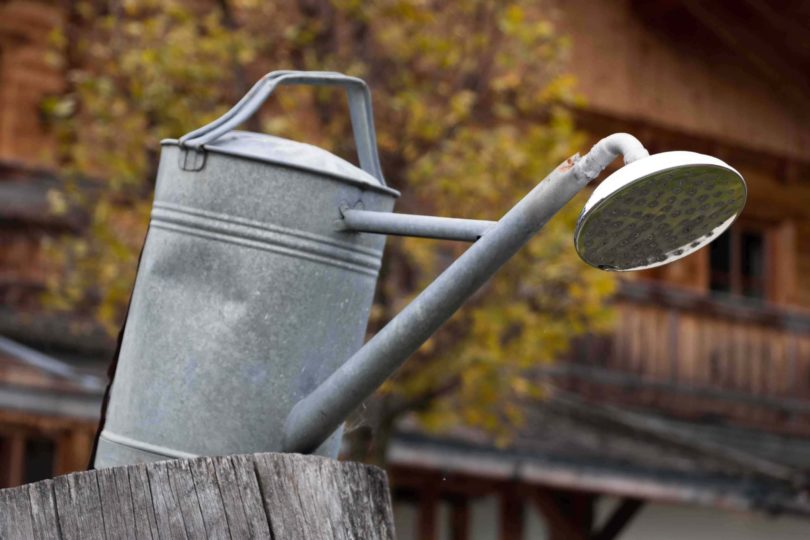
Just like us humans, plants need water to survive. So, unless you live somewhere that gets an expected and adequate amount of rain, you’re going to need a way to keep your little green friends hydrated. The easiest way to do this is with a watering can.
There are a ton of different sizes available, a good rule of thumb is to use one that gives you the best balance of ease of use and not having to fill it up every two seconds.
10. Watering Wand
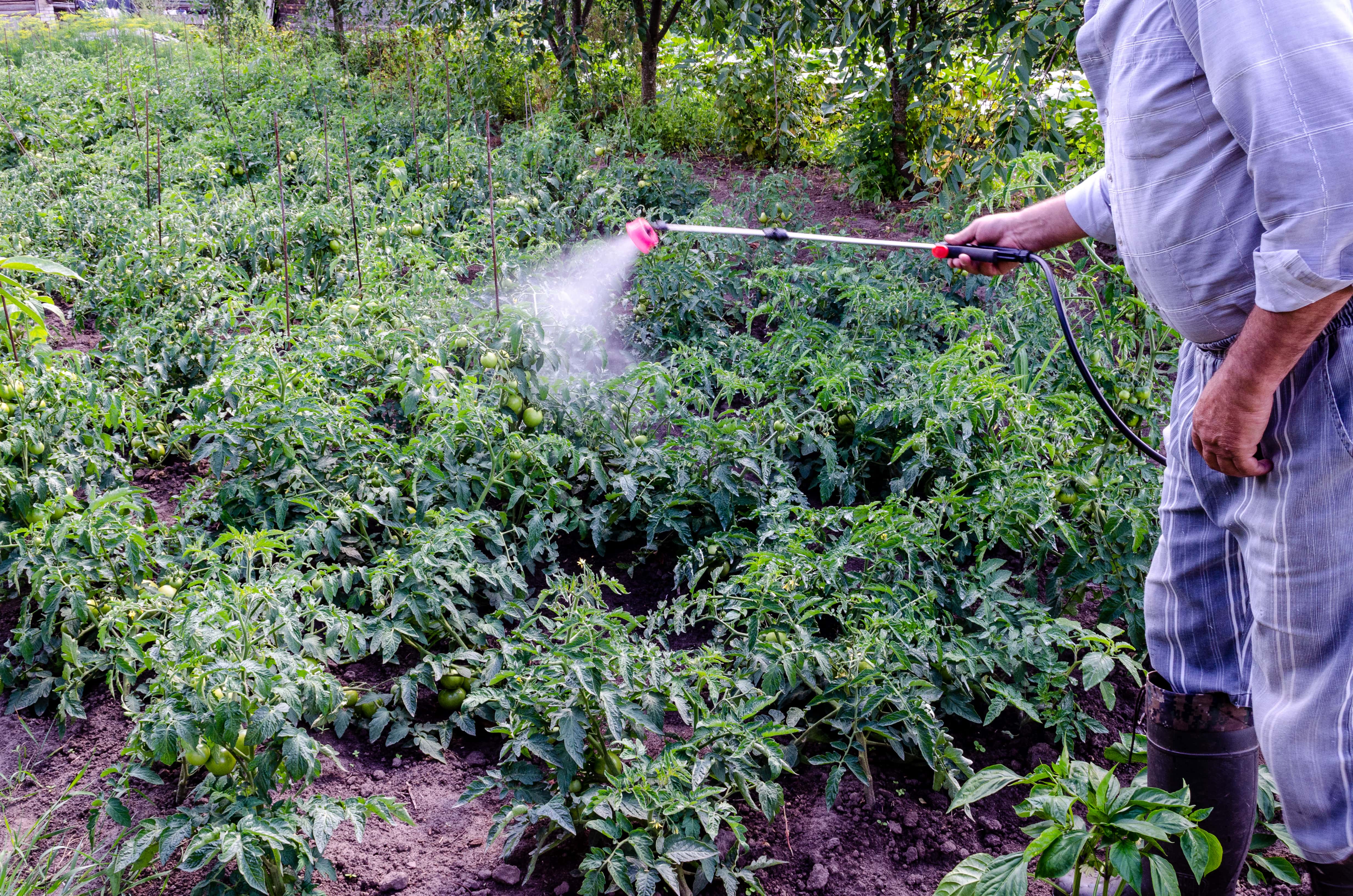
Another option for watering is a watering wand. This nifty tool attaches to your water hose. Usually, a watering wand offers a nice rainfall of water, so you’re not blasting your plants away. But the biggest benefit is that they are generally a couple of feet long. So, you can water a bigger garden without walking in it. Plus, they are way lighter than packing a watering can around—they are a back saver, for sure!
11. Spade
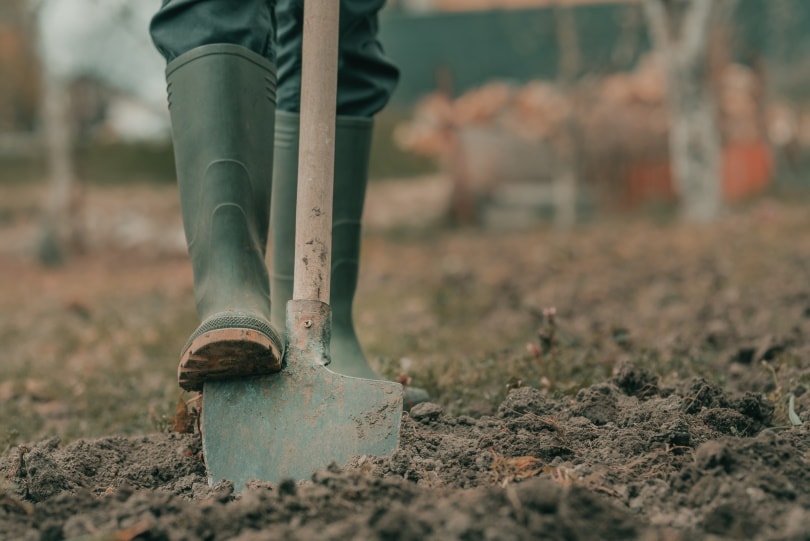
Another staple in the professional or hobbyist’s arsenal of tools is the spade. With a shorter handle than most shovels, a spade is meant for precise digging. Their slender flat blades make them ideal for cutting through root systems as well. You won’t move a lot of dirt at once with a spade. So, if you need to move a lot of dirt or dig a large hole, using a regular shovel would be better.
12. Loppers
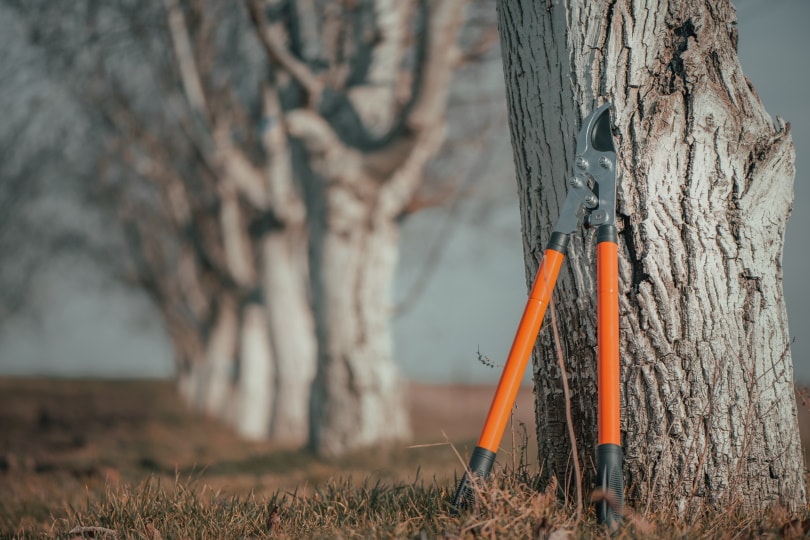
These goofy-looking tools have long handles designed to give you access to pruning in those hard-to-reach areas. There is not really one size of loppers. Generally, they have handles ranging from 18–24 inches and curved blades that are several inches long.
Another benefit of loppers is the force you can cut with. Because they have longer handles than regular pruning shears, you will be able to get more leverage. So, it’s easier to cut larger shrub branches, for example.
13. Scissors

You might not think of scissors as garden tools, but they are an invaluable addition to your gardening kit. They make it easy to get cut flowers for an arrangement or to collect herbs for dinner. They also give you a much more maneuverable way to do minor pruning and trimming in tighter areas instead of working with an awkward set of shears.
14. Edger

An edger won’t be the most common tool in your shed, but when it’s needed, it’s a valuable one. There are gas-powered versions of this tool and hand-held ones. These tools will make your life easier if you are trying to make a path in a garden or a perimeter around it. Essentially, they will cut into the ground in a straight line. Then you can put in whatever divider you want.
15. Adjustable Spray Nozzle

If you have a large garden in your backyard, an adjustable nozzle for your hose is basically a must-have. A watering can won’t be practical, and even using a wand probably won’t be—unless you have paths throughout your garden to walk on. With an adjustable nozzle, you will be standing in one spot watering everything. The best part: you’ll be able to hold an ice-cold beverage while you do it. Bring on that lemonade on a hot sunny day!
Conclusion
Now, don’t go out and buy all these tools at once because you probably won’t actually use them all for every type of gardening. For example, if you’re container gardening on your deck, then literally a hand trowel and a watering can will get you going. If you move onto bigger projects, add tools to your shed as you need them for specific tasks.
If you really want to get serious, then a few of the tools mentioned above are available in motorized versions. For example, some companies make battery-powered pruning saws and other garden equipment that will make your life easier!
See Also:
Featured Image Credit: PhotographyByMK, Shutterstock
Contents
